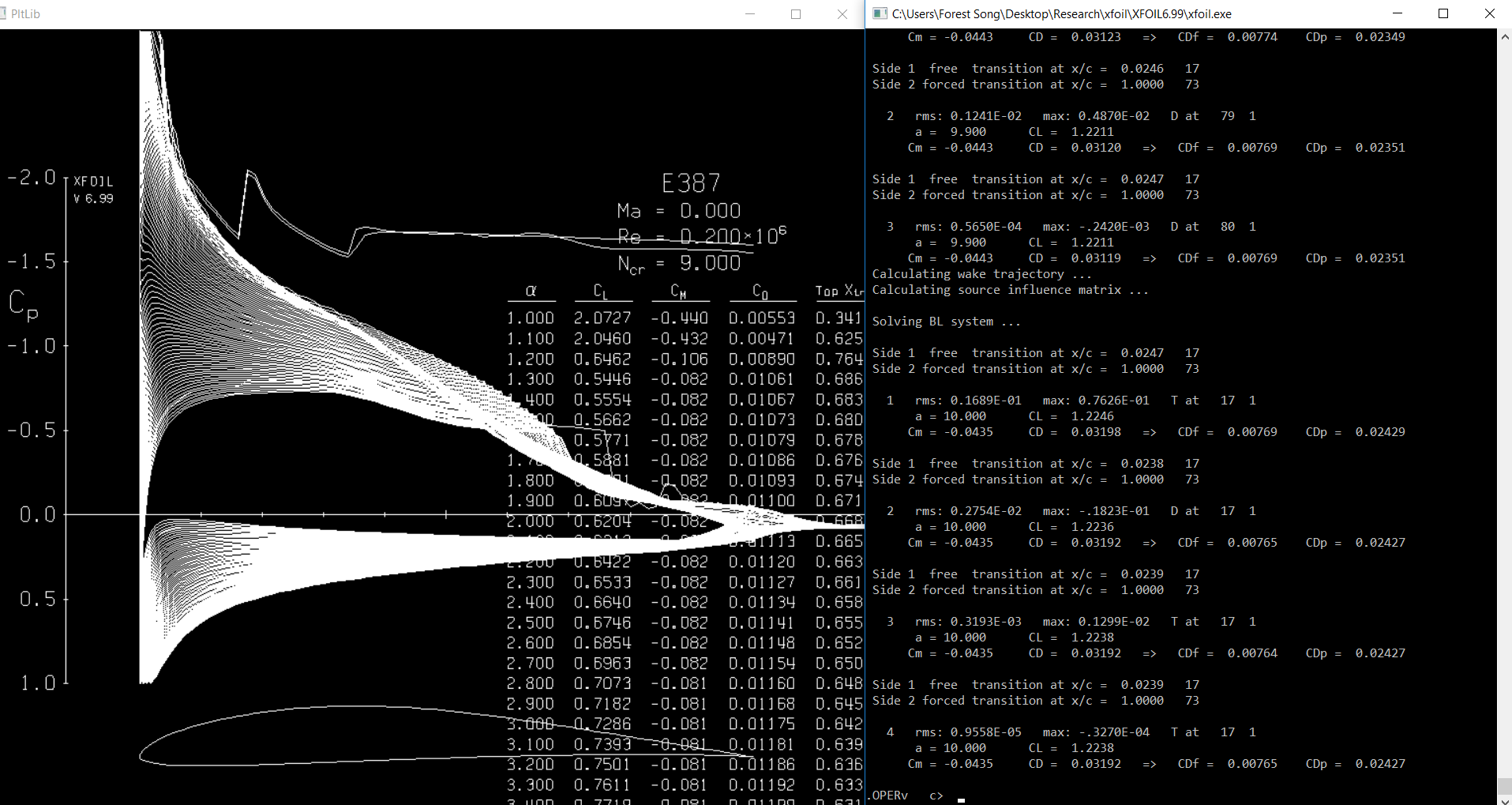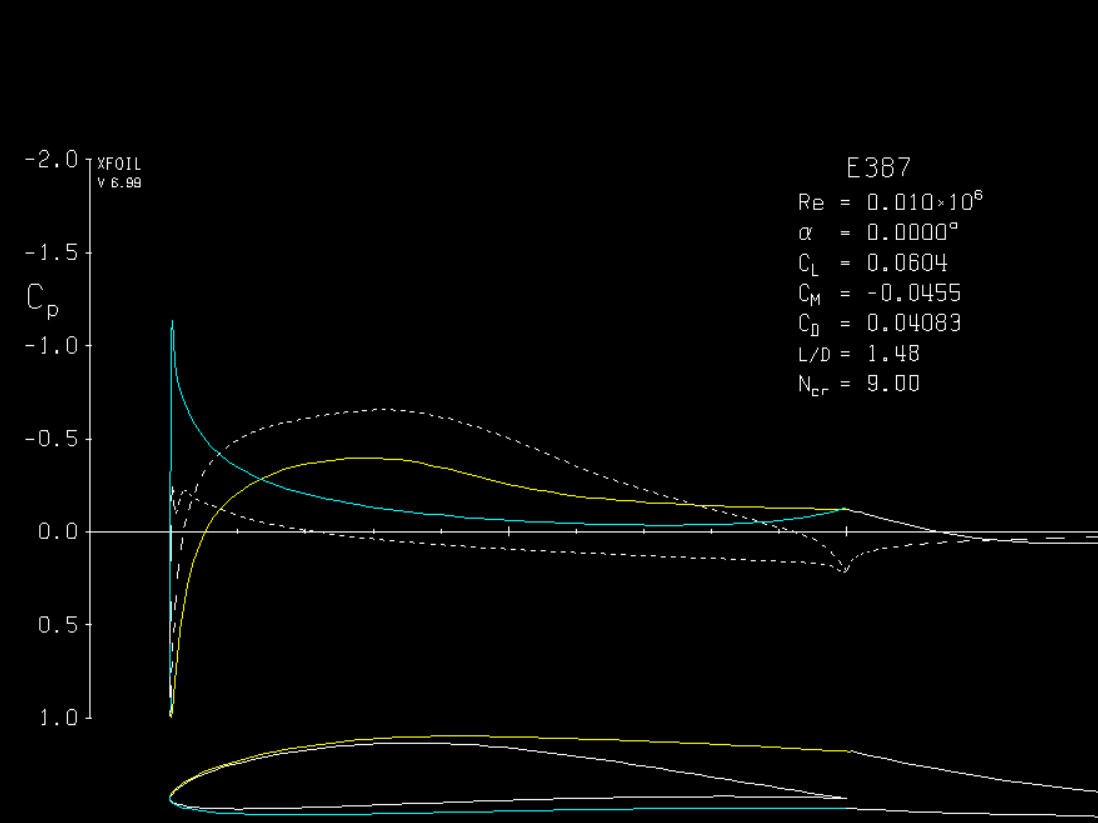Airfoil Analysis
Comparing Airfoils through programming
2D Airfoil Analysis
As part of my research with Dr. Bilgen at Rutgers University, during the semester, I was tasked with comparing different airfoil geometries and finding what factors influenced them. This was done through two different programs: XFOIL, a 2D airfoil analysis software, and AVL, a 3D airfoil analysis software.

Testing convergence with varying alpha (angle of attack)
Additional Testing can be found here
XFOIL is a powerful airfoil analysis software developed at MIT. By inputting information or generating your own wing geometries, varying factors such as Reynold's number, Mach number, Angle of Attack, Coefficients of Lift, Drag, etc., airfoils can be analyzed.
Additionally, I wrote a MATLAB script that accepts the data given from XFOIL and compiles it into an Excel document. Information on a NACA 0006 airfoil with varying alpha can be found here.
3D Airfoil Analysis
AVL is a 3D version of the program that can also analyze airfoils.
In order to further enhance the usefulness of this program, I wrote several MATLAB scripts that would repeatedly run these airfoils through AVL and allow for more rapid analysis, then generate data as well as a 3D graph that compared the effects of varying angle of attack and elevator angle on coefficient of lift, drag, and moment. Unlike XFOIL, AVL can only run an analysis of a certain angle at once, so this MATLAB script made it a lot quicker to analyze data.

The MATLAB scripts for running the analysis can be found here: Pre-Processing, Processing, Post Processing, Full Program.
